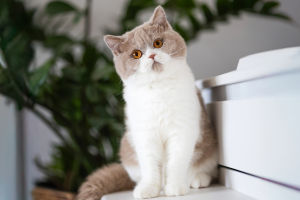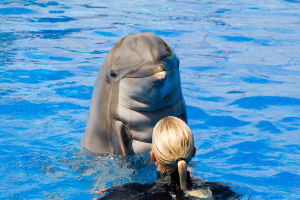Have you ever seen an insect that looks like a leaf? Or a harmless animal pretending to be strong? In nature, looks can be deceiving.
Many animals survive not by running faster or fighting harder, but by mimicking others. This clever strategy, called mimicry, helps animals avoid predators, catch prey, or blend into their surroundings.
But how and why do they do it? Let's explore the fascinating world of animal impersonators and uncover the reasons behind their extraordinary acts.
What Is Animal Mimicry?
Mimicry is when one species evolves to closely resemble another in appearance, sound, behavior, or scent. It's more than just camouflage—mimicry often involves copying other animals, sometimes even plants or inanimate objects. The goal is survival. In the animal kingdom, mimicry falls into several categories: defensive mimicry, aggressive mimicry, and automimicry (mimicking a part of one's own body).
For mimicry to work, it must fool a predator or prey. It only takes a few seconds of hesitation from a predator for the mimic to escape. And sometimes, pretending to be something dangerous or unappetizing can save a life.
Batesian Mimicry: The Great Pretenders
Named after naturalist Henry Bates, Batesian mimicry occurs when a harmless species copies the appearance of a dangerous or unpalatable one. A famous example is the hoverfly, which has black and yellow stripes like a wasp. Despite having no sting, it benefits from predators' fear of the real deal.
Another well-known example is the scarlet kingsnake, which mimics the highly venomous coral snake. Their color bands are similar enough to confuse predators. The key here is deception—predators avoid them just in case they're poisonous, even when they're not.
Müllerian Mimicry: Strength in Similarity
In Müllerian mimicry, named after Fritz Müller, two or more harmful species evolve to resemble each other. This mutual benefit makes it easier for predators to learn which animals to avoid. For instance, monarch butterflies and viceroy butterflies both taste bad to birds, and their similar orange-and-black wing patterns reinforce this warning.
The more species use the same "warning code," the quicker predators learn to stay away. It's nature's version of teamwork through shared appearance.
Aggressive Mimicry: Trick to Hunt
Mimicry isn't always defensive. In aggressive mimicry, predators disguise themselves to sneak up on prey. The alligator snapping turtle is a prime example. It has a pink, worm-like tongue that it wiggles to lure fish close to its jaws.
Another example is the orchid mantis, an insect that looks like a flower. Unsuspecting pollinators land on it, expecting nectar, and instead become the mantis's next meal. In this case, beauty becomes a deadly tool.
Automimicry: Disguising Within
Some animals mimic parts of their own body for protection. This is known as automimicry or intraspecific mimicry. Take the false-eye spots on the wings of many butterflies or the tails of some snakes. These markings confuse predators into attacking the wrong end, giving the animal a chance to escape.
The hawk moth caterpillar can inflate the front of its body to resemble a snake's head, complete with fake eyes. This sudden transformation can frighten birds or lizards long enough for the caterpillar to crawl away safely.
Plant-Like and Object Mimicry
Not all mimicry involves copying animals. Some creatures mimic leaves, sticks, or even moss to avoid detection. The leaf-tailed gecko in Madagascar can vanish against tree bark, while the stick insect is almost indistinguishable from twigs.
These masters of disguise depend on staying completely still for their act to work. If they move too much, the illusion breaks. Still, their adaptations are so perfect that they often escape even the sharpest eyes in the forest.
Sounds and Scent Mimicry
Some animals use auditory or chemical mimicry. For instance, the lyrebird can mimic the calls of other birds and even human-made sounds like camera shutters and chainsaws. This talent helps it attract mates or confuse rivals.
In scent mimicry, certain orchids emit smells that mimic female insects, tricking males into landing on them and inadvertently spreading pollen.
The bolas spider goes even further—it releases chemicals that mimic moth pheromones, luring male moths right into its web.
How Do Animals Learn to Mimic?
Most mimicry is not learned but evolved over generations. Natural selection favors animals that slightly resemble something dangerous or beneficial. Over time, these traits become more pronounced as they help individuals survive and reproduce.
However, some intelligent animals, such as cephalopods (like octopuses and cuttlefish), can change their appearance in real-time. They mimic other sea creatures or even the ocean floor by adjusting their color and skin texture within seconds. These "shape-shifters" show how advanced mimicry can become when combined with brainpower.
Why Mimicry Matters
Mimicry is more than a cool trick—it reflects the deep complexity of ecosystems. Every mimic relies on its model species and a predator's reaction. If one link is broken, the strategy may fail. As researchers point out in Current Biology, mimicry helps maintain balance in nature by shaping behaviors and interactions across species.
Understanding mimicry also has real-world benefits. Scientists study these strategies to improve robotics, camouflage materials, and even pest control techniques. It's yet another example of how nature inspires human innovation.
Conclusion: Nature's Illusionists
From butterflies and birds to spiders and snakes, the animal kingdom is full of skilled impostors. Mimicry proves that looking dangerous can be just as effective as being dangerous—and sometimes, pretending is the best way to survive.
Have you ever spotted an animal that fooled your eyes? Next time you're out in nature, take a closer look—you might just discover a hidden master of disguise!


